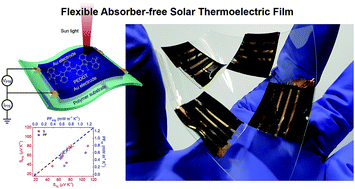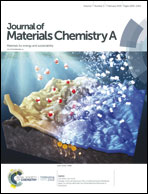Photothermally powered conductive films for absorber-free solar thermoelectric harvesting†
Abstract
The photothermoelectric (PTE) effect in conductive polymers is significant because it combines high photothermal (PT) and thermoelectric (TE) effects. Using poly(3,4-ethylenedioxythiophene) (PEDOT) films with various conductivities and crystallinities, the PTE effect in thin films can be established. The PT temperature increase (ΔTPT) under light exposure and the thermal voltage induced by ΔTPT for a series of PEDOT films indicated an unparalleled sensitivity to the carrier mobility in PT and TE conversions. The PTE Seebeck coefficients (SPTE) and power factors (PFPTE) for the PEDOT films correlated well with those in the dark state, indicating that the PTE effect in PEDOT can be translated into the TE effect induced by heating upon light exposure. The 180 nm-thick pristine PEDOT film shows high PFPTE values of 620 and 590 μW m−1 K−2 for a near-infrared laser and sunlight, respectively. The thin-film solar TE harvester with four PEDOT legs generates a power density of 38 mW m−2 and an energy density of 420 W h g−1, demonstrating the first and highest absorber-free organic solar TE output yet reported. Thus, the PT conversion mechanisms in CP films can be extended to thin-film solar energy harvesters.



 Please wait while we load your content...
Please wait while we load your content...